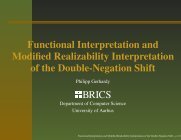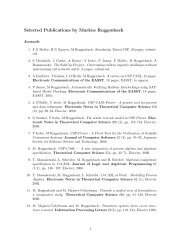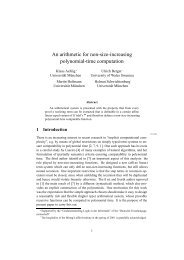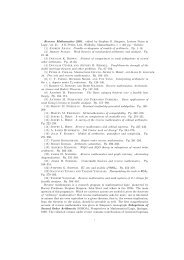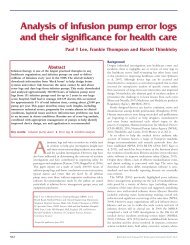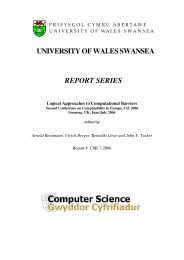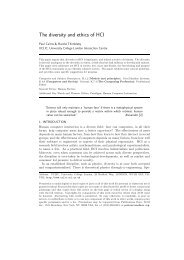Attacking AES via SAT - Department of Computer Science
Attacking AES via SAT - Department of Computer Science
Attacking AES via SAT - Department of Computer Science
Create successful ePaper yourself
Turn your PDF publications into a flip-book with our unique Google optimized e-Paper software.
Generalised <strong>SAT</strong><br />
<strong>AES</strong> and <strong>SAT</strong><br />
Translation <strong>of</strong> <strong>AES</strong> into <strong>SAT</strong><br />
Evaluation <strong>of</strong> initial translation<br />
Future work<br />
Certain aspects <strong>of</strong> <strong>AES</strong> may benefit from special knowledge which<br />
isn’t explicit in a CNF representation.<br />
Therefore, we would like to introduce a notion <strong>of</strong> generalised <strong>SAT</strong>:<br />
1 Centred around the idea <strong>of</strong> “constraints” and “active” clauses.<br />
2 Using the <strong>SAT</strong> algorithms and notions (such as CNF-like<br />
representations).<br />
3 Allowing more powerful inference for and recombination <strong>of</strong><br />
“sub-constraints” modelling the ability <strong>of</strong> <strong>SAT</strong> to recombine<br />
different aspects <strong>of</strong> the problem.<br />
4 Allowing more compact representations.<br />
In a certain sense “merging” <strong>SAT</strong> and CSP ideas to create a more<br />
powerful framework.<br />
Matthew Gwynne<br />
<strong>Attacking</strong> <strong>AES</strong> <strong>via</strong> <strong>SAT</strong>



